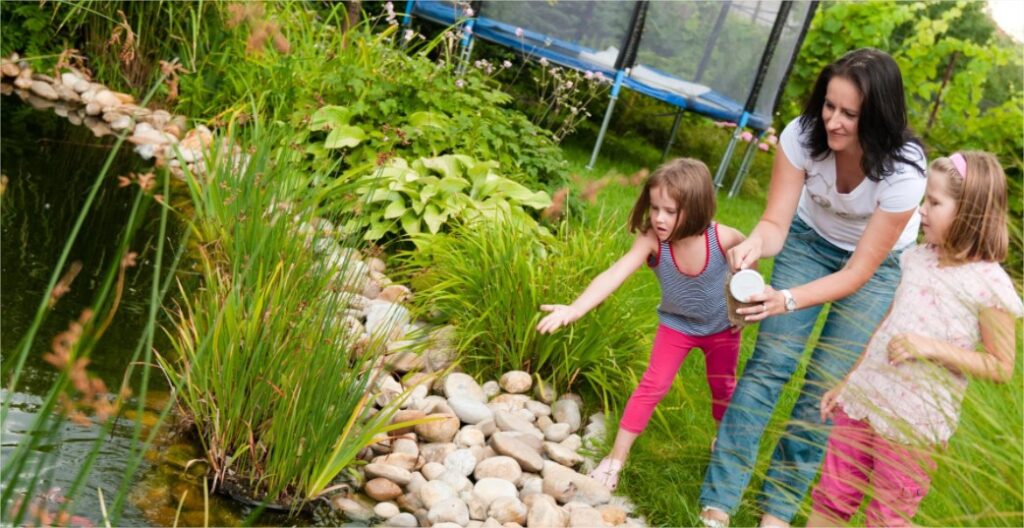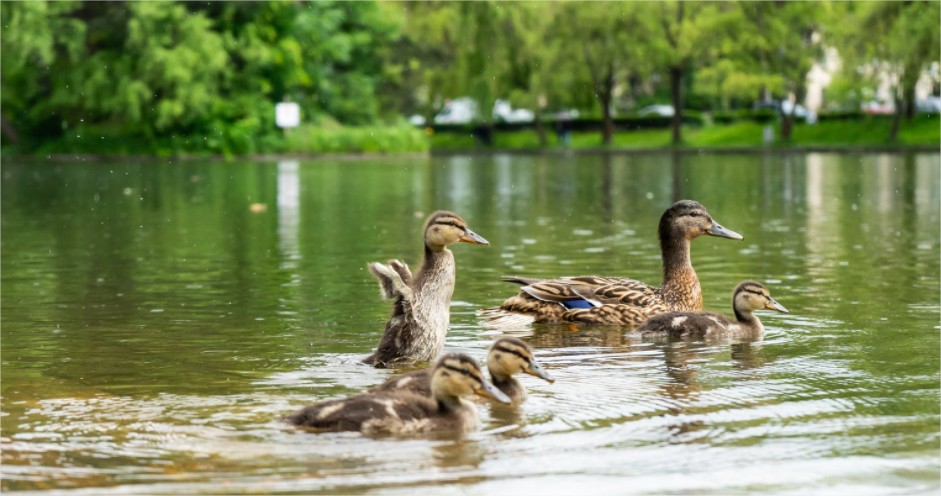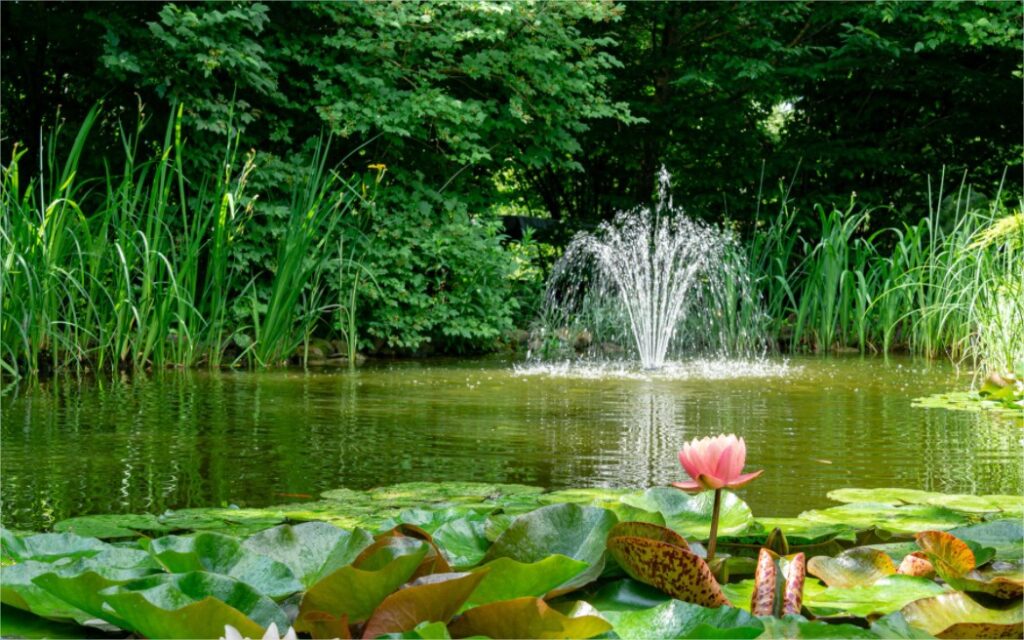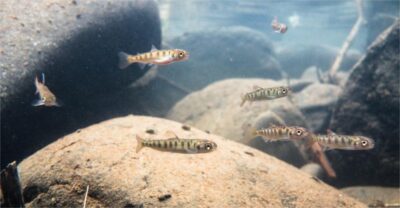If you want to add a natural touch that promotes an aquatic plant and animal ecosystem, consider creating a pond. You can do this between the beginning of spring (March) and the beginning of the fall season (September). If you have decided to embellish your outdoor space with a small pond, your garden will be more authentic and alive.
There are currently several techniques that allow you to build a beautiful pond. You must waterproof the bottom of the structure so that water does not infiltrate; then, you must limit the consequences of the phenomenon of evaporation by setting up a hydrological basin (to collect rain) to feed the pond.
Before starting, you must first define the use of this water body, its surface, as well as the cost of its creation and maintenance. You can create a pond to allow local wildlife to re-establish themselves: you will then have amphibians, dragonflies, beautiful lepidopterans and other insects, as well as natural and organic vegetation. Avoid introducing varieties of fish that may feed on the other animals present. If you want to have fish, you should build a pond instead.
1- Define the size and depth of the natural pond.
Only 2 to 3 square meters is enough to create a water body suitable for the development of amphibians and insects. But the more you increase the surface of the pond, the more its biological value improves: indeed, the vegetation and the micro-habitats that develop there will be more varied. The maximum surface area of a small pond is 25 square meters. But if your garden is larger and you are willing to allocate a larger budget to your project, you can build a large pond of about 100 square meters.

It is inevitable to define the depth and slope to ensure your pond’s quality: each variety of aquatic plants grows at a specific depth. Thus, it would help if you create different depths to favor the species you prefer in the natural pond.
Mints, forget-me-nots, sedges, lilies of the valley, etc. grow on marshy banks and edges. For semi-aquatic plants such as reeds, irises, water plantains and cattails, you need to create a sufficient area at a depth of 0.5 m. Then you have floating plant varieties like water lilies, pondweeds and duckweeds. You can also find oxygenating plants that grow underwater such as water milfoil and callitriches.
Create banks with gentle slopes or multiple levels (stairways). This reduces the risk of slumping and animals that accidentally fall in can get out of the pond unassisted. Avoid creating a shallow water feature because it can dry out easily. Also, over time, mud tends to accumulate at the bottom. Choose a pond with different depths to encourage the development of a variety of vegetation.
2- How to seal your pond?
You can use clay to make your pond watertight and spontaneously fill with rainwater and runoff. This is an affordable and natural alternative. It is also possible to build a tank to collect rainwater and ensure that your water feature is always filled. However, this material must be well packed and is difficult to handle. If the layer applied is not thick enough (between 15 and 20 cm) and if it is not well compacted, the watertightness of your pond may be compromised. So, if this natural option appeals to you, it is recommended that you follow all the steps before flooding your pond.
You can also use other coverings such as a plastic tarp or a PVC tarp. Choose a substrate with a good thickness to avoid premature tearing. Manufacturers indicate that these covers have a lifespan of over 10 years. It is recommended that you do not wear shoes when walking on the tarp.
When you have finished digging your pond, with the various gradations desired, pour in a 5 cm layer of sand before covering with the liner, especially if the soil is stony. Then cover with a layer of soil that will allow vegetation to grow.

3- How to proceed concretely?
You will need spades, shovels, picks, a mason’s level, a wheelbarrow, sand, a waterproofing material (tarp or clay). The length of the tarp should be equal to the maximum length of the pond + (maximum depth x 2). The width of the tarp is equal to the maximum width of the pond + (maximum depth x 2).
Mark out the outline of your pond using stakes and rope. You will need appropriate equipment (spirit level) to do the earthwork and don’t forget to dig a little deeper by adding 10 to 20 cm of sand, tarp, soil or clay to waterproof the pond.
Be sure to remove any rocks or roots that could puncture your tarp. The surface should be smooth and well-packed before pouring the sand. The tarp should conform to the shape of the surface and should not have any sharp folds or tension to prevent tearing.
You can fill the pond once, clean the plastic liner and correct the shape of the depression before fixing it. Don’t forget to add a layer of soil to facilitate the development of vegetation. You can use rainwater, water from a well, or tap water to fill your pond.

4- Finalize the creation of your pond
To protect the edges of your tarp from UV rays, grow grass. You can also create a marshy area between the water and the grass. You can then build up the banks by installing flat stones to consolidate.
Once your pond is well filled (it takes a few months if you wait for rainwater and runoff), start planting aquatic plant species from your region. Exotic plants are not recommended because they may compromise the ecological balance of your pond. You can also introduce small animals from your area to create a small natural ecosystem. For example, amphibians will feed on small pests such as mosquitoes.
Don’t forget to maintain your water feature periodically: when fall arrives, cut back the plants that are on the banks. Remove some of the plants that grow underwater and invade your pond. Do not throw them away immediately. Place them on the banks so that the animals that have settled there can repopulate the pond.
After a few years, you must clean out some of the silt that has accumulated at the bottom of the pond so that it does not suffocate. Make your pond creation project a reality in the best possible conditions: don’t hesitate to ask for professional help, if necessary, in order to guarantee the durability of your pond.










